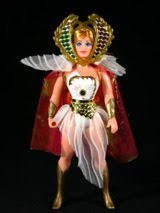
This short children's fiction novel is appealing right off the bat. The book looks old fashioned and mysterious. Snicket begins the book with a warning to potential readers explaining that if they like happy endings then this is not the book for them because there is no happy ending just misfortune, despair, and sadness. I know that this immediately fed into my own curiosity, and I was wondering if the author was serious about the dark nature of the book.
The book introduces in detail the characters that will be present in the thirteen-book series. The three Baudelaire orphan children (their parents were killed in a "horrible accident") are the main characters. The children are sent to live with the most awful of all relatives and the story just keeps getting more and more dark and "unfortunate." It seems like just as things are starting to brighten up for the Baudelaire's, things all of a sudden get worse.
Although the series may be too dark and depressing for some readers, they really are page-turners. The book is not all negative either, the text reinforces the positive habits and outlooks of the children. For instance, reading is an important pastime for the children in their dire environment and they become very creative attempting to plan their escape.
No matter how horrid life seems for the Baudelaire children, they always see the light at the end of the tunnel - NOTHING IS COMPLETELY HOPELESS.







